Leaderboard
Popular Content
Showing content with the highest reputation on 12/27/2022 in all areas
-
I wrote another piece just to add some more schemata to the palette. I have to say that there are many more than the ones described by Gjerdingen. Not many resources to understand how some of them work, but I'm making it. Sometimes I had to take my own solution. I didn't write all the grades in each pattern, but just a few words explaining them: The Quiescenza (quietness, rest) is a pattern used to establish the tonic, it was widely used (Mozart, for example) in the opening of a section, or at the end of the piece to re-establish the tonic. It works over a pedal on the tonic with a surprising clash between it and the sensible. The Ponte (puente, bridge) is an extension of the dominant chord which goes to the tonic. It can be as long as you want. The Monte (mountain) is a stepwise ascending (climbing) pattern that can also be extended, as I did, here. The Cudworth is one of the most used cadences, in which the melody runs from 8 to 1. A deceptive cadence ends with the 6 in the bass. An evaded cadence ends with the 3 in the bass. The Fonte (fountain, falling) is a stepwise descending pattern. The Corelli's Leapfrog was a surprise. Gjerdingen mentions it but it's not very well explained, taking into account it has many variants. It's a fantastic way to use prepared dissonances (9th and 7th) always resolving, of course, but allowing incredible clashes. The Pastorella is a recreation over a chord using thirds, and moving around the tonic. The Romanesca is universal (Pachelbel canon) that can be combined in many ways. Hope you enjoy it, it's funny! I think if someone wants to understand and write in late baroque, galant, classical, even romantic style, learning this thins is a must.1 point
-
Dear all, here's my latest attempt. Some time ago I think it was Peter who suggested practicing with a theme and variation. Usually I struggle with last movements, so I thought I'd give it a try. It is difficult! and hard! hopefully it taught me something, and I know there are a few things that need correcting (I hope it's only a few, actually). Anyhow, I had fun writing this and as usual I'm hoping to get honest and useful feedback! Thank you all for this great forum!1 point
-
1 point
-
Hello! I thought I would share a piece I wrote back in late February-March for SATB saxophone quartet, my first experience writing for an all-brass ensemble, which taught me a lot as a strings player. The title comes from my experience with a neurological condition, synesthesia, where two or more senses are automatically interconnected. In my case, I associate each musical key with a color and see those colors in my mind's eye. This piece begins and ends in F minor, which is deep purple or violet for me. The score is attached below. I would love to hear any constructive criticism. I've been told there are no glaring technical issues, but I am curious how I could best bring out the saxophone's unique strengths. Thank you! 01 - Full score - Violet.pdf1 point
-
This is a piece I wrote to depict the feeling of standing alone in an icy field at night. I live in a very sparcely populated area, and it can get quite cold here in the winter. The second half of the piece, after the short episode in the strings, is almost identical to the first half, but it feels lighter in character due to all the minor chords being turned major and vice versa. This was also the first piece I've written using MuseScore 4 and the new sounds are pretty good! They've definitely helped my music feel more "real". The piece is nominally in D major, but it very quickly modulates to D minor and then is further altered from there, until the string episode occurs and we end up back in D major, which is where the piece ends. Also, I've been listening to a lot of Bruckner lately, and there are traces of that influence in parts of this piece, I think. Thank y'all for listening! If you have any feedback I'd greatly appreciate it as it really helps me improve! Happy Holidays!!1 point
-
Hi again! I have been much more inactive than I often am last week. I am very exhausted right now, as I just finished my fourth sonata and every time I finish one it seems that my brain decides to go on vacation, but I've seen and listened to a few works published during the days I've not been paying attention, which is actually nice as I will not need to dig :). If I fall asleep today, I'll make sure to begin checking some of them tomorrow. Before that, let me present you my 6th nocturne, which is kind of "close" to the prior one. It was dedicated to my good friend (and possibly future pianist) Juan de Dios. As always, I'll be glad to read anything, from a tiny comment to an in-depth review. I'll leave the PDF right here too: 53 - Nocturno Nº6.pdf I (as always) prefer not to comment anything more about the piece itself and leave you to it. If you are interested into some other works of mine, you can always check my "About" page in this forum, which again turned out to be a very epic tool to organize one's content. Thank you so much in advance! (sorry for so little :P) Kind regards, Daniel–Ømicrón.1 point
-
Just composed this score tonight. It is the first after a short 3 day break. Hope you enjoy! Also im not sure if I like the ending very much1 point
-
I gotta have to try myself those new sounds, but judging by the score alone, at least what I've read seems to be written with care, and guessing that muse sounds cares about that the sound you achieved is thus, more meritorious. First of all, the atmosphere created by the timpani alone and the scarcity of instruments agglutination in A-B-C sections makes this piece very unique. I believe you succeeded in the purpose you had for this piece, I can imagine the scenes you picture very easily, specially in the first 3 sections (and F-G-H). Near ~5:15 I listened to an abrupt change on the volume in media res which I'm not sure it was intended. I see the change on dynamics, but I don't think what MS4 is doing is what you are seeking for. Anyway, this is a software-related issue. My only criticism would be that the D section, despite very beautiful, felt unconnected with the rest of the piece. I guess that was the intention, and I still maintain it's beautiful, just that it didn't convince me as a part of this anyways, solid, good-sounding, and accurate (regarding its purpose) piece. Kind regards, Daniel–Ømicrón.1 point
-
Hi, my overall impression is super +++. I like the "nudity" of some phrases, the crescendo in the fine part of B, the melody of the horns in C, the sadness of the progression in D.... The drone in D works fine, even when there are other tones very close in the bottom of the register that clash. Yes, it reminds me to Bruckner in the construction. But also to Rautavaara... ¿?1 point
-
Bravo, well done. I noticed, just like Quinn did, the absurd mute switches. Even with what you said, it would still be too quick. I would suggest at least a full measure of space between. (For some reason everyone underestimates the time it takes to put on a mute and overestimates the time it takes to go from arco to pizz). Also, in my opinion, (though it might not be a goal you have), the engraving needs some work.1 point
-
Hi again! Guessing that my mates above have already reviewed it exhaustively so sorry if I am repeating some criticism. The piece itself felt like a walk at sunset in a kind of dirty city park. Something like this: You lose the rhythm (and those small passages are actually refreshing and "fit" to my ears) in certain sections just to recover it with more strength, which I like. Possibly my favourite part is the section that starts at M42 and ends at M56. Sometimes one wants to give a bit of contrast to a certain rhythmical section for whatever reason and that can go very wrong for a variety of reasons. However, your transition to calm and the calm itself seem very beautifully and properly crafted thus, coherent and on top of that, "confident". I must add that I found strange that you use italian and english to indicate character and tempo nuances. Not that it's wrong (if it is, I don't really know, and I myself use spanish, hardly ever, but I do), but I found it strange. I would have ended around 5:30, as I was starting to feel that I was losing the track again, but let's see what the "epilogue" offers: • You recover the first, vertebrating idea and kind of use it to do a final set of passages that end, in my opinion, very satisfyingly. This reminded me some piece of @Henry Ng Tsz Kiu in which I saw a clear ending but, contrary to what I would have done, he continued and ended very successfully in my opinion, so, congratulations! Finally, despite I have written (like 5 years ago) for a saxophone among other instruments, I am clueless on their specs so I cannot tell. What I can say is that I see F minor as dark blue, not as purple or violet: Thank you for sharing! Kind regards, Daniel–Ømicrón.1 point
-
Since I didn't know the piece in origin, I am unable to tell what could be better or worse from your work alone. I agree with Henry on the fact that the cello only serves as the voice under the melody but in the few secs after 2:15 might have been a lost opportunity. Having a score would be definitely great. Nonetheless, the piece sounds pretty good. Kind regards, Daniel–Ømicrón.1 point
-
What's the title of the book or books from which you've taken all of this? I definitely want to take a look and I am more or less sure you mentioned it in prior posts. The composition is as always, very clean and as @Henry Ng Tsz Kiusaid, didactic and very straight-forward to read and understand due to the visual guidelines and descriptions written here. I am not sure if I'd be that radical but since I have never intended to write anything constricting myself to any particular style I wouldn't know. What I see is how useful can this be, at the very least, in terms of adding another very practical approach when it comes to make a piece. Kind regards, Daniel–Ømicrón.1 point
-
Heyyy @Omicronrg9, I am waiting for your post here! Another cool piece marking your signature! I love that 5/2 time signature at the beginning and turns to a 3/2. I think the 5/2 is like a hiccup and hard to speak out the feeling, and suddenly it seems like the awkward and struggling phrase becomes flowing and the feelinh can be more clearly expressed. The key change as well, from a hard, cold Eb minor to other keys with less flat, thus more "in touch" with emotions. I don't know why, but the quick notes of triple semiquavers give me the impression of a Spanish Sarabande, even it's not in triple meter. I love b.20, it really baits my expectation. Something warm like E flat major appears and all of a sudden vanished. Great tonality change here. The return to A sections becomes a little bit more agitated with thicker texture. Nice change to 2/2 time in b.38 with more agitated volume and chords. They combine together to achieve a passionate effect! Nice staccato passage in b.46, I love it after a heavy passage! So funny and sacarstic like mocking one's own sadness! But it's short lived, as in b.54 passionate theme comes back, love the contrast! Nice modulation to C minor in b.71! So refreshing to hear this direct key! I find the last note of A flat in the left hand quite strange though, and I will prevent the false relationship by changing it to a A natural as well. I fins the transition in b.78-80 abrupt though. But it can be cool to get back to Eb minor within a few chords, so great sudden return. It becomes more direct in the last section in 3/2 time. Overall a well planned piece for me with cool harmonic and temporal effect! Great job Daniel! I definitely look forward to your fourth piano sonata!! Henry1 point
-
Hi Henry, Once again thanks for the feedback. I'm up to the Coda, Yay! Anyways, I've done more revisions and just wanted to share them. With regards to b.37-48., I'm about to start reharmonizing those bars. Nga Mihi expert211 point
-
I love this excerpt as well. Definitely it's mysterious, though I've never watched Ex machina before.1 point
-
I got all these emotions I don't know what to do with I thought it was all a myth Never thought something like this could happen to a girl like me Now you got me down on my knees Baby we was like Bonnie and Clyde Now you got me thinking bout suicide I got all these emotions I don't know what to do with I can't decide what's wrong what's right \1 point
-
What are you talking about? You have great harmonic continuity! You can always find that next magical sounding chord! About the emotive harmonic moments - I wanted to contrast the emotive moments I do have with a stark bleakness in the rest of the piece that symbolizes the night and darkness. Thanks for your review!1 point
-
Dear @Luis Hernández, As always I really enjoy your piece! It's really didactic (like Bach's Inventions) to show not only what the schematas are, but how to use them beautifully and elegantly. These kind of pieces will be much better than a theory book for me as a composer! I love the dissonance of the Corelli's leapfrog! Resolve of dissonance to create another dissonance! I find that in Mozart's Fugue for two pianos and is fascinated by it! Luis, really grateful that you pay the effort to write all these pieces and share it here! Henry1 point
-
1 point
-
Bro I tried so loving hard to make you happy I don’t know what i’ma do anymore Cry at night so no one sees the pain Eyes bloodshot red feeling high is the new game Baby you was my wall of fame I should’ve listened when they said you not who you claim You said i’m the one to blame Baby you a wonder of shame Bro I tried so loving hard to make you happy I don’t know what i’ma do anymore Cry at night so no one sees the pain Eyes bloodshot red feeling high is the new game Baby you was my wall of fame I should’ve listened when they said you not who you claim You said i’m the one to blame Baby you a wonder of shame Why you let me walk right into the flame So baby tell me what’s her name This scraggy is so lame Was i just a game This scraggy all the same You need to be tame This scraggy ain’t like some video game You hit the aim But you said i’m the one to blame scallop I hope you burn up in a flame Look what we became It’s a shame Bro I tried so loving hard to make you happy I don’t know what i’ma do anymore Cry at night so no one sees the pain Eyes bloodshot red feeling high is the new game Baby you was my wall of fame I should’ve listened when they said you not who you claim You said i’m the one to blame Baby you a wonder of shame Why you let me walk right into the flame So baby tell me what’s her name This scraggy is so lame Was i just a game This scraggy all the same You need to be tame This scraggy ain’t like some video game You hit the aim But you said i’m the one to blame scallop I hope you burn up in a flame Look what we became It’s a shame But don’t worry i overcame1 point
-
Hello!! I wrote a ballroom waltz titled "The Color of Your Eyes" inspired by none other than: her brown eyes lol. You can never go wrong with a cheerful waltz for any occasion right? 🙂 Let me know what you think and I hope you like it! Video: https://youtu.be/ieZsZ04Rks0 Score: https://drive.google.com/file/d/1Yef2wzSqjKo38y8tS92QPGPCAHKVzrHb/view1 point
-
I shared it here. I'm actually thinking I could refer to your channel using my own using the post feature or something. Kind regards!! Yup. You can choose the reverb, you can edit the Dbs in the instruments and much more 🙂 And you sharing my channel means a lot to me 😄. Many thanks Daniel!!1 point
-
Dear @Jeremy Carter, A PDF score will allow fellow members to review your piece in a more detailed fashion! I've listened to your version and the original version of the Jack's Lament. I find that the original version more varied since it's orchestrated and contains a vocal line. In your version the cello mostly provide a basic harmonic bassline but doesn't have more prominent role. I think it can carry more melodic weight, e.g. carry the main theme in both low register, to depress, and unnaturaully high register, to cry out the lament. It can also provide a new countermelody as well. That said, your arrangement quite good to match the original version's creepiness and sadness. What is your intention of the arrangement? Is it to allow the 3 instruments to play the song, or to vary and develop it? Henry1 point

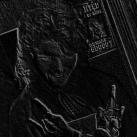


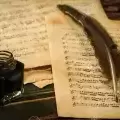


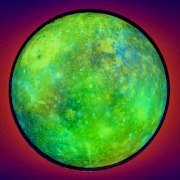

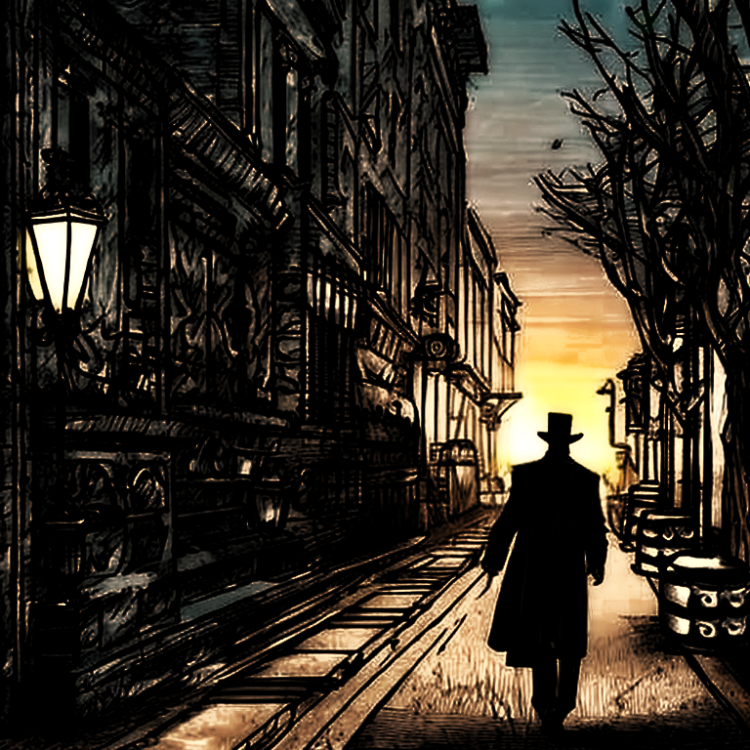
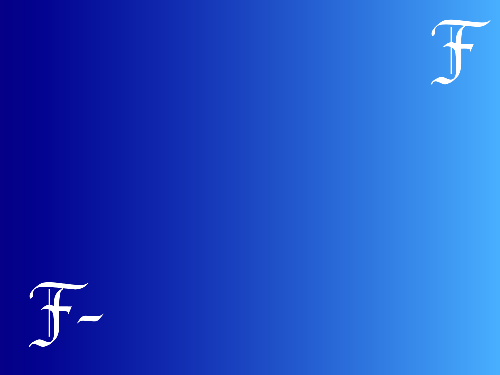

.thumb.png.8b5b433a341551e913a34392660bc95b.png)